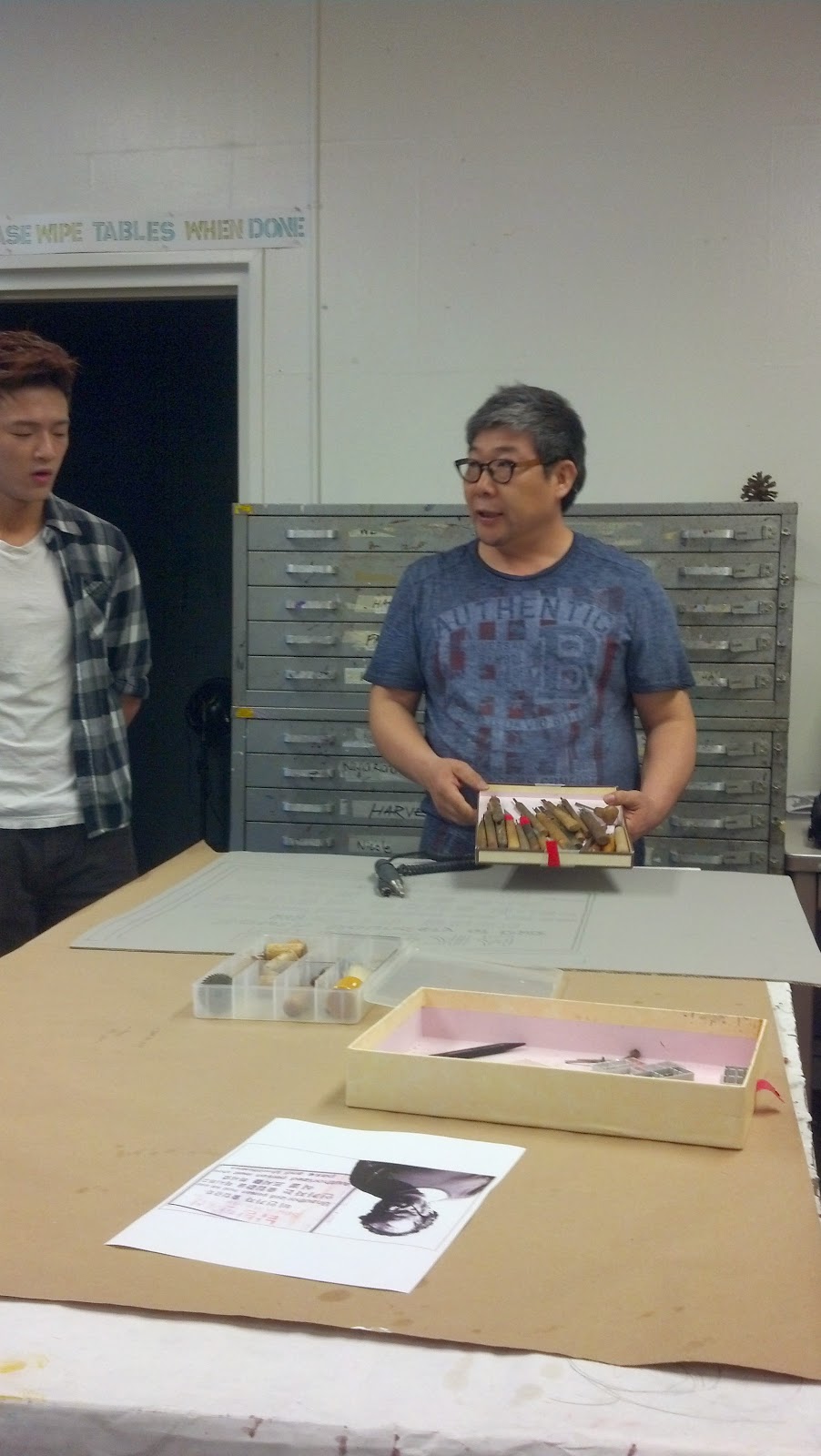 |
God's Eye exhibition, University Union Gallery, 2014
Exhibition date: April 1- April 24, 2014 |
I stumbled upon a gallery as I was exploring the second floor of the University Union at Sacramento State University and it happened to be holding a well advertised exhibition, the
God's Eye by Troy Mighty. The University Union Gallery had artwork occupying each side of the walkway before opening up to the main room. The
God's Eye exhibition was unique in terms of style, installation, and how it interacted with the audience. Most of the works are small in size, but carefully crafted and professionally framed. The show exuded a playful and warm atmosphere which I enjoyed and found refreshing.
 |
You Look Up So Good,
spray paint and acrylic on canvas, 2014 |
As I entered the gallery, the first thing I saw was a small square canvas hanging from the ceiling. Upon closer inspection the design appeared to be similar to a doily and the bright colors were reminiscent of psychedelic art. Looking at the title that hung next to it, I smiled, nearly laughing! The title read
You Look Up So Good, as if the art was conscious of its audience
. Even though the piece would be more easily viewed if hung traditionally, the artist's purpose seemed to aim toward amusing his audience and to have them speculate why he chose to display it so high up - a question that is answered upon looking at the title.
 |
| In The Sky A Thunderous Glory, And Below Is Where We Grow, eight acrylic paintings on fiberboard 2012 |
 |
| From The Series: "Living In Our Heads", watercolor and pen on paper, 2014 |
To the right was a rather large piece made up of eight acrylic paintings on fiberboard and some other mediums. It was titled
In The Sky A Thunderous Glory And Below Is Where We Grow. The installation had a cartoon deity flying above and below on the grass is a cartoon snail. Although I don't fully understand the meaning of the piece, I still enjoyed it and loved the fact the artist was approaching artwork in an unconventional manner.
 |
Planned and Unplanned Connections, Pencil and Paper, 2012
and God's Eyes, sticks, yarn and good intentions
|
As I entered the main room I noticed a rope was looped around the ceiling and part of it hung down to the floor. I became aware of the space above me, which is not a common experience in galleries. As I looked at the small art pieces around the gallery, I noticed there were kite-like sculptures
made up of what looked to be yarn and sticks suspended below some of the works. After reading the title and description for these sculptures, I learned they were also made of "good intentions". I found these sculptures, titled "God's Eyes", to be attractive in their simplicity and inventive in the way they were installed. One would think they should be hung separate from the art so they wouldn't distract the audience but for me this was not the case. I'd argue that they help complement the art because they fill up some of the empty wall space and the diamond shapes point toward the pieces, maintaining the visual flow of movement.
 |
| Eternal Atonement, acrylic and pencil on skateboard, 2009 |
A piece painted on a skateboard, titled
Eternal Atonement, features
a human-like female and male with faces covered with what looks to be hair standing at the summit of a round mountain. We see here the artist exploring different ways to display art while using traditional medium of acrylic and colored pencil. It is not uncommon to see art printed on skateboards, but seeing it displayed in a gallery setting with the actual medium applied to it was a new experience for me.
No Title "You Make The Title!", acrylic on masonite, 2010
One art piece had no title and instead the sign below read "Yo
u Make The Title!", with a clipboard attached below. The art style, color palette, and forms were simple and flat but it was well executed with clean lines and precision. The flat colors that Troy Mighty employs complements his art style. I liked seeing that the artist was asking the audience to name a piece. Sadly I could not come up with a title at the time.
 |
| Me & Harold & William Playing Ball, 1982, pencil and pen on paper, 2012 |
The
God's Eye exhibition features paintings and drawings of humans, animals and odd creatures rendered in a cartoon style. The flatness of color and simple compositions work for the style that Troy Mighty uses. There is a charm to these art pieces that come from the simplicity of the composition, color and clean tight lines. The God's Eyes sculptures added a magic touch to the show without distracting from the art. The artwork was nicely framed and the exhibition was installed well. The overall mood of the show made me happy and I felt welcomed into the space. The highlight of the show for me was Mighty's interaction with the audience through his art. He hides playful comments in his descriptions and asks the viewers to become a part of his artistic process by naming a piece. He even includes a "goodbye" in his artwork that can be seen when the viewer leaves the gallery. If you are looking for some light-hearted, low-brow art, the
God's Eye exhibition by Troy Mighty is recommended.
Edit: I just discovered I have seen the artist's work before! He has some art in the
Volution Gallery located on 434 Main Street, Placerville, CA. It is definitely a unique group of artists and artwork there. I recommend anyone going to Placerville to give the gallery a visit!

















































